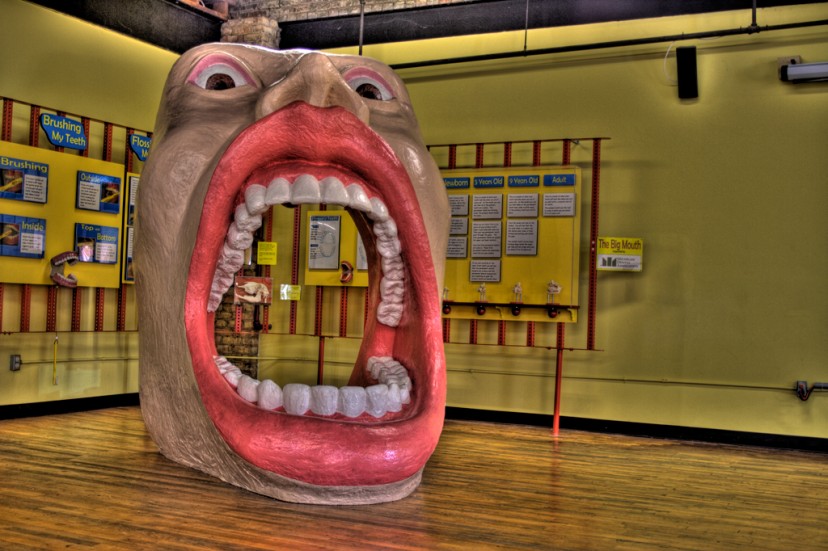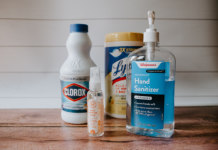The link between diet and health is well established. The adage, “you are what you eat,” finds support in every health system throughout the world. Not everyone considers how important a role the human mouth plays within our digestive health framework. The mouth is not just a space for chewing, it is truly a gateway and starting point for our overall health. Proper dental hygiene has powerful ramifications in regards to not just our oral and digestive health, but can also impact our cardiovascular health, cognitive abilities, and much more.
Healthy Mouth, Healthy Body
As part of our digestive system, our mouths are home to millions of microbes, which, when in balance, support digestion of our food, helping us to get the most out of our diet and maintain strong immune system functioning. However, when bacteria levels rise to unhealthy levels, or when damaging colonies of bacteria take over the natural flora of the mouth, conditions of periodontitis (severe gum disease) can more easily arise, leading to many other complications throughout the organ systems of the body.
Killer Consequences of Gum Disease
When left untreated, gum disease can lead to alveolar bone resorption, infection, and tooth loss, but that’s just the beginning. The bacteria that cause periodontitis have been found in the plaque that affects the arteries in our heart and elsewhere. This plaque can lead to heart attack and stroke.
As Harvard Medical School’s Harvard Health Publications explains, “Oral bacteria [can] also harm blood vessels or cause blood clots by releasing toxins that resemble proteins found in artery walls or the bloodstream. The immune system’s response to these toxins [can] harm vessel walls or make blood clot more easily. It is also possible that inflammation in the mouth revs up inflammation throughout the body, including in the arteries, where it can lead to heart attack and stroke.”
According to the Mayo Clinic, the tissue inflammation and overgrowth of bacteria associated with tooth decay and gum disease has been positively linked to a host of serious health conditions, including: cardiovascular disease, diabetes, pregnancy complications, and osteoporosis.
Plaque and the Heart
As medical research progresses into the 21st century, more and more researchers are finding what are popularly called multifactorial links between diseases. This means that seemingly unrelated conditions share common health factors. Chronic periodontitis results from an imbalance in the microbes of the mouth, including the film that covers our teeth (biofilm), in particular. The dental plaque imbalance triggers an inflammation, and this is where the trouble starts.
Although inflammation is the body’s protective attempt to remove the injurious stimuli and heal the damaged tissues, inflammation can lead to destruction rather than repair of the tissues. This stresses the body as a whole, and so compromises health. This stress can reach into the very fundamental building blocks of the body, even at the level of the mitochondria. Researchers are exploring this link between gum disease and conditions of diabetes and obesity.
Mental Health
A similar multifactorial relationship exists between gum disease and the onset of Alzheimer’s disease. There is an obvious correlation between the onset of Alzheimer’s and the decline of oral hygiene, but researchers are exploring the multi-directional relationship between poor dental hygiene and the onset of Alzheimer’s through multifactorial relationships related to the microbial film present in periodontitis.
Because the inflammation and bacterial infection of tooth decay and gum disease weaken your immune system, oral health also has major implications for individuals already suffering from immune deficiency disorders such as HIV/AIDS and autoimmune disorders like rheumatoid arthritis and multiple sclerosis.
Healthy Babies

Maintaining healthy gums is also important for pregnant women for similar reasons. Maintaining overall health and immunity better ensures healthy deliveries. Gum disease has been linked to premature births and birth defects.
Consequences for Older Adults
In addition to leading to conditions of cardiovascular disease, diabetes, and Alzheimer’s, as well as having a serious effect on adults with existing medical conditions, poor dental health contributes to serious difficulties in older adults. Because of oral disorders, many older adults have problems chewing, or chronic oral pain. Either can lead to difficulties in eating, which leads to malnutrition, and also problems in social relationships. Oral disorders significantly lessen the quality of life of older adults. It increases the risk of local infections, recurring respiratory infections, and ultimately, increases the risk of mortality.
Simple Measures
Although it may seem like the simple tasks of brushing your teeth according to the recommendations of the American Dental Association, flossing, and tongue scraping might have a minimal effect on your overall health, it has been proven to have many disease-prevention benefits.
In cases among individuals with existing conditions of type 2 diabetes (T2D), coronary artery disease (CAD), cerebral vascular disease (CVD), rheumatoid arthritis (RA), and pregnancy, periodontal therapy was proven to lessen the complications and negative health effects of those conditions as well. The proof is in the hospital bills, or in this case, the lack thereof.
Tips for Mouth & Dental Health
- Brush your teeth for two minutes at least twice a day.
- Floss daily.
- Brush or scrape your tongue every morning.
- Eat a healthy diet and limit “between-meal” snacks.
- Drink plenty of water.
- Replace your toothbrush every three to four months, or sooner if bristles are frayed.
- Schedule regular dental checkups.
Because your mouth is part of a bigger system, and has effects on your whole body, it’s important to consider it as such.
Additional methods to maintain oral health include the newly popularized ancient Ayurvedic technique of “oil pulling”.
—
Photo Credits:








